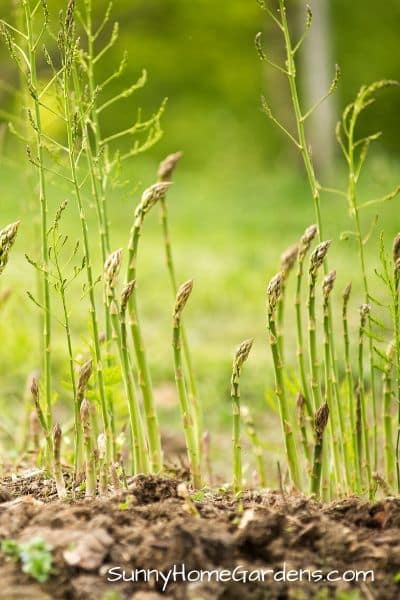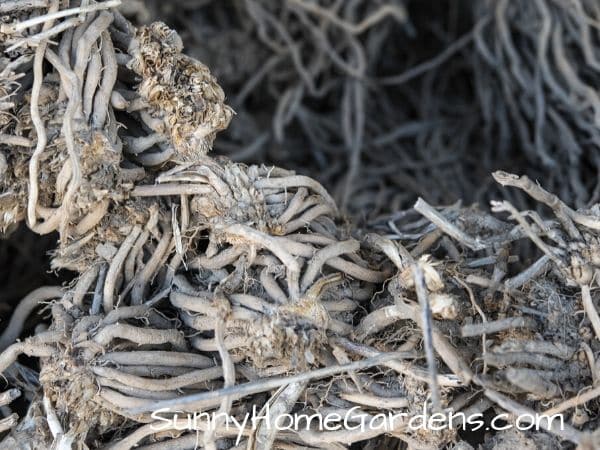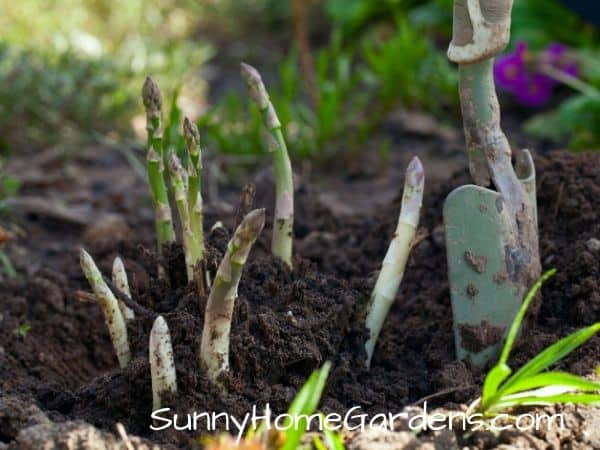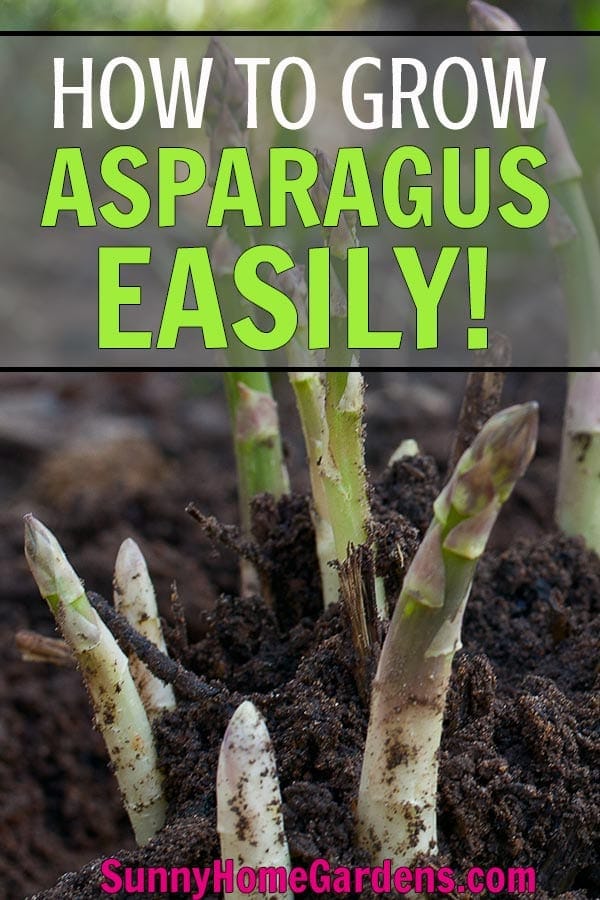Asparagus or ‘Asparagus officinalis’ is a perennial vegetable that can be harvested year after year, once the first spears are cultivated.
Although asparagus is fairly easy to grow and plant, if you’ve never grown it before you may be wondering how do you grow asparagus plants.
First things first, you’ll need to bottle up some patience to grow asparagus as it takes approximately 3 years for the first plants to be ready for harvest.
After that, you can harvest them in early spring for 15-30 years or more. When deciding where to plant asparagus in your yard, it’s important to keep in mind how long the plants will be living there.
Asparagus is a cool-weather crop so once the warm weather begins, stop harvesting and let them grow until fall when they begin to die back.
Asparagus is delicious added as a side dish to many recipes like steak or added as an ingredient in recipes like soups.
The best part is, you can easily grow asparagus in your garden. All they require is adequate space and sun to thrive.

Though you can grow them in a large container, it is not the recommended method. If you are in for the long haul and a massive yield, allocate a decently sized area to grow and care for these plants.
While you might want to grow it for your own family, asparagus can be produced on a large scale and supplied to farmer’s markets and the like to earn extra income. This could be another reliable stream of revenue for you without much trouble.
The Asparagus plant traces its origins to Siberia South Africa, North Africa, Asia, and Europe and comes in different varieties.
Also, it’s important to add that they are a dioecious plant meaning there are male and female plants.
Male plants are believed to provide better spear production than female plants.
Although there is a mix of male and female plants, many gardeners choose to grow all-male asparagus. Female asparagus is easy to identify as they produce bright red berries that are toxic to humans.
Here are some great tips to help you grow and care for asparagus that will hopefully give you abundant yields in the future.
Table of Contents
Planting Asparagus
Planting asparagus should be carefully planned out.
Factors such as where to plant (keeping in mind it will come back for many years to come), the varieties or method of planting; either by seeds or from asparagus crowns, and the age of the crown should be taken into consideration, as well. Older crowns yield sooner than younger crowns.
When purchasing crowns, generally the older the crown is the more expensive it is. Keep this in mind when shopping for asparagus crowns.
Make sure they are dry and not mushy when looking for crowns at the nursery.
Where and When to Plant Asparagus

The suitable season for planting is in the early spring. The most popular method is planting from the crowns. Make sure the soil is above 50 degrees Fahrenheit before planting your asparagus.
Prepare the ground thoroughly by eliminating all weeds and make sure the soil is well draining.
Asparagus thrive best when the pH of the soil is within 6.0 to 8.0. The soil would be best if mixed with manure or compost. Asparagus will grow beautifully well if it gets the right soil nutrients.
The best time to plant is early morning or late in the day, so the plants aren’t exposed to the hot sun straight away.
Asparagus like to be in a sunny area that will be undisturbed year to year, so plant them away from the rest of the garden. Asparagus will grow up to 5 feet tall and 3 feet wide, so give them plenty of room.
How to Plant ASPARAGUS

Dig the soil to a depth of 12 to 15 inches and add in a 2 to 4-inch layer of compost. Asparagus love phosphorus so be sure to mix your compost well.
You can then choose to either plant in mounds or not, gardeners have success both ways, so it’s a matter of preference. Be sure to plant the crowns 6-8 inches deep in your compost and soil mixture, water well.
Begin by just covering the crowns with 2 inches of soil and as they grow continue adding soil little by little until they are buried evenly at soil level with the rest of the bed.
You’ll see sprouts in a matter of a few weeks. Remember it can take 3 years before you can harvest your asparagus. Even if you choose to plant older crowns in the spring, it’s best to wait until the next season to harvest.
Being sure your asparagus becomes established in your bed is important to your future yields. Once you do begin harvesting make sure that you don’t overdo it and strip the plant clean.
You’ll want to wait until your spears are about the diameter of your finger before you harvest them. Don’t harvest any smaller. You’ll have a good 4 to 8 weeks time to harvest (the older the plant the longer the harvest season will be) and then it’s time to let it rest until next season.
Proper Care
Your goal is to provide your asparagus the best conditions for them to thrive.
Since they take so long to mature it’s important to follow these tips:
Soil
As soon as you see the shoots appear add more fertile soil. You can also dress the topsoil with mulch.
Water
Water the crowns regularly throughout all seasons and keep the bed damp during harsh weather conditions. Well watered soil actually helps keep roots warm during freezing weather.
Temperature
Temperatures between 75-85 degrees Fahrenheit during the day and 60-70 degrees at night will keep them growing at a steady rate.
Sun
They can grow quickly if they are exposed to direct sunlight for up to 10 hours a day. That is why it’s critical to select the best location for them.
Fertilizer
Asparagus, being a heavy feeder needs fertilizer to grow. You can do this in the mid-spring or late summer when it is actively growing.
Pruning
Once fall begins to roll around, some of the leaves will turn yellow and brown. In the late fall, you can begin removing the leaves once they have completely died back.
Weed Control
You do not want to see weeds competing with your asparagus plants for the vital nutrients and water. The asparagus plants likely won’t survive their first year if they have to compete with weeds. So be sure to plant in a completely weed-free bed and then stay on top of any new weed growth and remove them right away.
Asparagus Pests and Diseases
Despite some varieties of asparagus being resistant to diseases, pests and disease control is something to be aware of.
Asparagus Fusarium Root Rot
Asparagus fusarium root rot is one of the most common and most dangerous diseases to attack the plant. Fusarium infects the soil and it’s hard to control. Meanwhile, only disease-resistant varieties can stand against it.
Asparagus Rust
Asparagus rust is another common threat to asparagus crops. Since it is a fungal infection, you can use a chlorothalonil fungicide to treat them before more damage is spread.
Aphids and Thrips
Similarly, there are two common pests that threaten the growth of asparagus plants and those are aphids and thrips. However, neem oil will help control them.
Harvesting Asparagus

Resist the temptation to harvest in the first season. The best time is the third year when they have become more tender.
Additionally, do not harvest after spring so that they can soak up enough energy throughout the summer for the next season.
When we say you need to wait until the third year to harvest, you’ll want to take into account the age of the crown you’ve planted. If you’ve purchased a 2-year-old crown you’ll need to wait until it is 3 until you begin harvesting. Even if you purchase a 3-year-old crown you’ll need to wait at least a year before beginning to harvest so that it can become established.
To harvest, use a knife to cut them or just snap them off at ground level. You can harvest asparagus every day or two during the season.
How to Store Asparagus
Although you can store asparagus for later use, it is best consumed fresh right after it is harvested.
You can maintain some freshness if you store them in the refrigerator. You can bundle them and stand them up on their ends in a container or cup filled with an inch of clean water and cover with a plastic bag for up to a week.
If you want to store asparagus for longer term, you can always make pickled asparagus.
Growing asparagus doesn’t take a lot of work, but the yield is enormous when you consider the fact that they will likely live for decades.
Whichever asparagus variety you choose to grow for your family it will definitely be an experience to remember and pass down.
Have you grown asparagus in your garden? Share any tips you have in the comments below.




